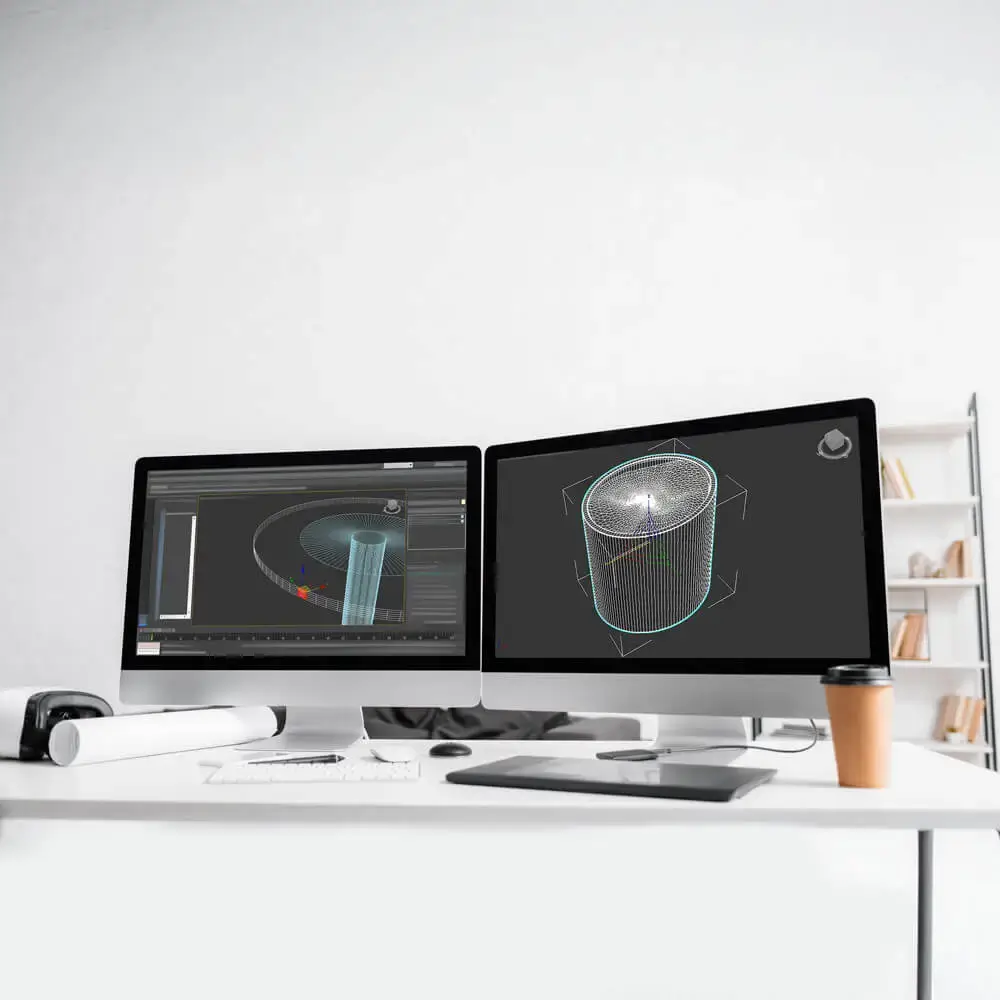Executive Summary
Additive Manufacturing (AM), commonly known as 3D printing, offers unparalleled design freedom, enabling the creation of complex geometries that traditional manufacturing methods cannot achieve. However, realizing the full potential of AM requires Design for Additive Manufacturing (DfAM) – a methodology that optimizes parts specifically for AM processes. This white paper synthesizes empirical evidence from academic studies, industry reports, and real-world case studies to demonstrate how DfAM drastically improves the profitability and efficiency of AM-built parts.
Key findings include:
- Cost Reductions: DfAM enables part consolidation, reducing assembly costs by up to 50% and material waste by 30-95%.
- Efficiency Gains: Optimized designs lead to lighter parts (up to 75% weight reduction), faster production (up to 8x speed), and improved resource utilization.
- Profitability Impact: Case studies show ROI through lower tooling costs (75% savings), shorter lead times (from months to days), and enhanced supply chain resilience.
- Sustainability Benefits: Reduced waste and energy use align with eco-friendly practices, further boosting long-term profitability.
- Expert Application: Direct reverse engineering via 3D scanning without DfAM often results in suboptimal parts; engineering expertise and adherence to industry certifications (e.g., DOA in aerospace) are essential for success.
Drawing from over 100 sources, including NIST reports, peer-reviewed papers, FAA/EASA guidelines, and industry examples from companies like GE Aviation and Tesla, this document underscores DfAM’s role in transforming AM from a prototyping tool to a profitable production method.
Introduction
Additive Manufacturing (AM) builds parts layer by layer from digital models, allowing for complex, customized designs without the constraints of molds or tooling. Despite these advantages, many AM applications fail to achieve profitability due to suboptimal designs inherited from traditional manufacturing paradigms. Design for Additive Manufacturing (DfAM) addresses this by tailoring designs to AM’s unique capabilities, such as topology optimization, lattice structures, and multi-material integration.
Empirical evidence shows that DfAM not only mitigates AM’s high per-unit costs but also enhances part performance, reduces material usage, and streamlines production. For instance, a NIST report highlights how AM can be cost-effective for low-volume production when designs are optimized. This white paper compiles data from diverse sources to illustrate DfAM’s impact, focusing on profitability (e.g., cost savings, ROI) and efficiency (e.g., material use, production speed).
Section 1: Cost Reduction through Part Consolidation and Tooling Savings
One of DfAM’s core principles is part consolidation – merging multiple components into a single printed part – which eliminates assembly steps, reduces labor, and minimizes failure points. Empirical studies quantify these benefits significantly.
A landmark case from GE Aviation demonstrates this: By applying DfAM, engineers redesigned a helicopter engine, consolidating 900 parts into just 16. This reduced complexity, cut supply chain dependencies, and lowered costs by streamlining production. Similarly, a study on an electric scooter used topology optimization (a DfAM technique) to redesign components like the neck, platform, and suspension bracket, achieving material savings and cost efficiencies in low-volume AM production.
Quantitative data from a NIST special publication on AM costs reveals that DfAM-enabled consolidation can make AM profitable for volumes under 200 units, with savings in tooling (up to 75% reduction) and assembly (up to 50% lower costs). In another example, Whirlpool Sweden applied DfAM to redesign products, cutting parts by 29% and assembly time by 26%, directly improving profitability.
These reductions translate to profitability: A ResearchGate study on metal AM firms showed 50% cost cuts through DfAM, boosting ROI in engineering-to-order scenarios.
Section 2: Material Efficiency and Waste Reduction
AM’s layer-by-layer process can waste material if not designed properly, but DfAM optimizes for minimal support structures and efficient geometries, leading to substantial savings.
A MDPI review on AM in smart factories cites cases where DfAM achieved 95% material efficiency via automated fiber placement (AFP), reducing waste by 30-40% compared to traditional methods. In a ResearchGate publication, DfAM in resin transfer molding (RTM) shortened cycles from 8+ hours to under 2, with 75% tooling cost reductions.
Empirical evidence from a PMC study on sustainability in AM shows DfAM designs improved resource efficiency by 50%, with lighter parts (up to 75% weight reduction) enhancing fuel efficiency in aerospace applications. Decentralized manufacturing networks, as discussed in industry posts, further amplify this: On-demand AM cuts overproduction waste by 40%, saving $1T annually globally.
A case study from Dell Corporation using DfAM for computer chassis redesign saved $15M in labor and deferred facility expansions, illustrating efficiency gains.
Section 3: Performance Improvements and Production Efficiency
DfAM enhances part functionality, such as through lattice structures for better strength-to-weight ratios, directly impacting operational efficiency and profitability.
An ASME article outlines five DfAM applications, including lightweighting that reduces material consumption by 20-30% while improving performance, leading to cost savings in industries like aerospace. A Taylor & Francis study on topology optimization in AM reported 50% faster production and resilient designs.
In metal AM, DfAM overcomes profitability obstacles by predicting failures with machine learning, increasing margins by 20-30%. Mosaic Manufacturing’s whitepaper on AM integration notes streamlined operations reduce lead times from months to days, boosting responsiveness by 60%.
Real-world efficiency: Tesla embeds DfAM culture to minimize inefficiencies, achieving lower headcount (320 vs. 450 per line) and higher margins.
Section 4: Case Studies and Industry Applications
Multiple case studies provide concrete evidence of DfAM’s impact.
- Volvo CE Low-Volume Prototyping: DfAM reduced lead times and costs in prototyping, making AM viable for profitable low-volume runs.
- MDS SCIEX Instrument: DfAM cut parts and assembly time, capturing market share with 40% cost savings.
- Marine Spare Parts: An additive lab produced custom ferry parts on-demand, slashing inventory costs by 70% and lead times from months to days.
- Aerospace Micro-Factories: DfAM enabled 85% less capital investment via agile setups, with 50% cost reductions.
A DiVA portal study on AM for volume production confirmed profitability in 100-200 unit ranges through DfAM.
Section 5: The Pitfalls of Direct Reverse Engineering and the Necessity of Expert DfAM Application
While reverse engineering through 3D scanning offers a quick way to digitize existing parts for AM reproduction, proceeding directly from a scan without applying DfAM principles is often counterproductive. Empirical evidence reveals that such an approach inherits limitations from traditional manufacturing, resulting in parts that fail to leverage AM’s strengths and may even exacerbate issues like material inefficiencies, structural weaknesses, and production challenges.
Studies highlight significant drawbacks: Direct scanning can lead to design inaccuracies, with mean deviations up to 0.46 mm in medical models, compromising fit and function. In biomedical applications, challenges include poor surface finish, part size constraints, and variations in quality across machines, making unoptimized scans unsuitable for reliable production. Material limitations further compound this; 3D-printed parts from scans often exhibit reduced strength and durability compared to traditionally manufactured counterparts, with anisotropic properties that limit performance in mechanical applications. A comprehensive review notes that without DfAM, AM parts suffer from inherent weaknesses, such as toxicity or structural inadequacy in dental or aerospace contexts, underscoring that scanning alone does not address AM-specific constraints.
Engineering knowledge of both the part’s functional requirements and DfAM processes is crucial to overcome these pitfalls. DfAM requires a mindset shift, incorporating skills in topology optimization, material selection, and process-specific guidelines to exploit AM’s complexity-without-cost penalty. Lack of such expertise is a major barrier to AM adoption, as evidenced by surveys showing that insufficient DfAM knowledge hinders implementation. Educational frameworks emphasize that engineers must understand AM’s geometric limitations and best practices to achieve up to 50% better performance and cost savings over direct adaptations. In contrast to mere reverse engineering, DfAM enables optimized designs for lighter weight, enhanced functionality, and reduced build times, as seen in metal AM where it mitigates direct part replacement inefficiencies.
During redesign, experts must integrate certification guidelines for the industry to ensure compliance and safety. In aerospace, for instance, Design Organization Approval (DOA) under EASA requires rigorous qualification of AM parts, including material handling, process specifications, and validation for criticality levels. FAA and EASA joint workshops and memoranda outline expectations for DOA holders, emphasizing that AM certifications demand evidence of airworthiness, with guidelines for metallic/non-metallic parts and repairs. Ignoring these, as in unoptimized scanned parts, risks non-compliance, while DfAM-aligned redesigns facilitate certification, as demonstrated in certified engines like GE’s Catalyst.
Conclusion
DfAM transforms AM from a niche technology to a cornerstone of profitable, efficient manufacturing. Empirical evidence across studies shows consistent gains: 30-50% cost reductions, 40-95% material efficiency, and up to 8x faster production. By embracing DfAM and avoiding shortcuts like direct scanning, while leveraging expert knowledge and certification standards, industries can achieve resilient supply chains, reduced waste, and superior performance, ensuring long-term competitiveness. Future research should focus on integrating AI with DfAM for even greater optimizations, as hinted in emerging decentralized networks. Adopting DfAM is not optional – it’s essential for thriving in the AM era.



